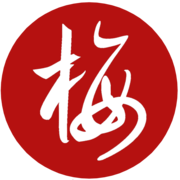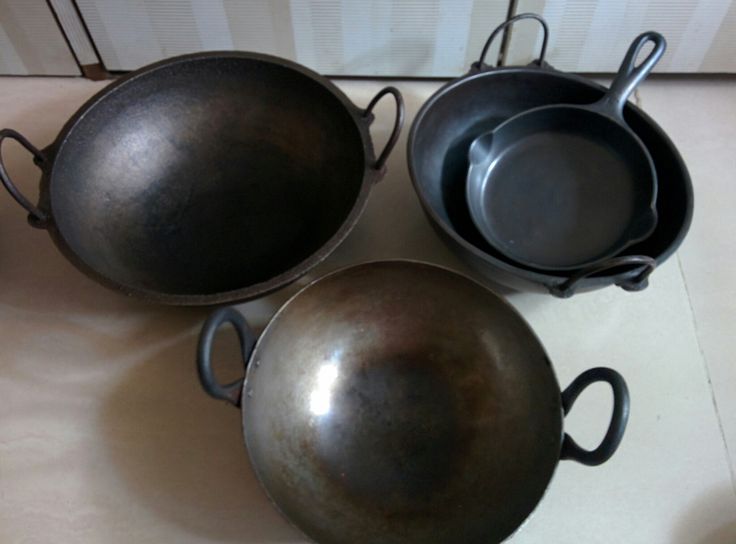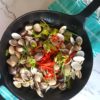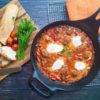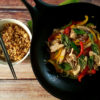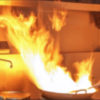Why buy a wok?
Before I even cover how to buy a wok, let’s think about why you’d need a wok.
The difference between a wok and a pan is the shape. A wok is concave in shape to facilitate food’s natural movement in it. In comparison to the flat Western pan, the area exposed to the heat source is small.
It then means, the wok depends a lot on the conductivity of the material to transport heat to the food and cook it. It also means, if for some reason, the heat is too high and there is a risk of the food being burnt, all we have to do is use a spatula and move the food to the side or give it a toss. Therefore, the chance of burning food in a wok is far lower than a flat pan.
Secondly, when using a wok, we can push the ingredients to the side while adding other ingredients to the wok. This method is not achievable with a flat pan. In doing so, the temperature of the aromatics or spices that are cooked before the proteins and vegetables will not change drastically. There is a marked difference in the taste this way.
Thirdly, almost everything that you want to cook on a flat pan can be done on the wok with equal or better success. You’ll just need a smaller heat source.
So now, how do you choose a wok? The first thing to consider is the material that you want.
Choosing the material
| Thermal Conductivity | Heat Capacity | Non stick ability | Healthy | |
| Cast Iron | ** | *** | ** | *** |
| Iron | ** | ** | *** | *** |
| Carbon Steel | ** | * | *** | *** |
| Copper | *** | *** | ** | ** |
| Steel | *** | * | * | *** |
| Glass | * | ** | * | *** |
| Ceramic | * | ** | * | *** |
| Teflon-coated | *** | * | *** | * |
| Aluminium | *** | * | * | * |
There are four considerations when choosing the material for a wok.
- Thermal Conductivity
- Heat Capacity
- Non stick ability
- Effects on health
Thermal Conductivity
The thermal conductivity of a cooking vessel also determines what it can be used for in the kitchen. For example, ceramics are incredibly popular for use in the oven, but will crack on the stove top because ceramics have a low thermal conductivity.
In buying a wok for Asian cuisines, it is therefore desirable to get woks made of metals with very high thermal conductivity, ruling out materials like: glass, ceramic, and stone.
The higher the thermal conductivity, the faster the food will cook. In Asian cooking, we cut our ingredients to small bite size pieces before cooking, so that food not only cooks quickly but also has that distinctive wok breath (鑊氣) taste.
Cookware made of metals have high thermal conductivity. Ranked from the highest to the lowest thermal conductivity: copper, aluminium, iron, carbon steel and steel.
Heat Capacity
Heat capacity is the amount of energy that is needed to raise or lower the temperature of the material. The higher the heat capacity, the better the material can hold the temperature. For example, cast iron is often cited as an example of a high heat capacity cookware material that keeps food warm for a long time.
When cooking, the higher the heat capacity of the material, the longer the cooking surface will stay hot, and hence food cooked in vessels with higher heat capacity tend to be better tasting.
As heat capacity is a function of the mass of the material, I have compared the heat capacity of each kind of wok base on the normal weight that manufacturers make them. Among the common metal cookware materials are, from the highest to lowest heat capacity: copper, cast iron, carbon steel, stainless steel and aluminium.
Nonstick Ability
It can be very frustrating when frying a fish or an egg in a wok when things get stuck. The cooking experience is often ruined.
Most materials can be made non stick with proper initiation of the wok (开锅) and proper care. In addition, the more a wok is being used, the more nonstick it will become (养锅). For this reason, always choose the most expensive wok you can afford and spend the time in making the wok a joy to use. It’s no different from the need to frequently season a cast iron pan.
Materials from the most nonstick: forge iron, cast iron (machined or polished), carbon steel, standard cast iron, copper, aluminium and steel.
What to avoid
In consideration of the above three properties of the materials, these are not recommended: stone, ceramics and glass.
Health Reasons
Unlike western cooking of searing food on pans, Asian stir fry involves the use of a metal spatula to move food around the wok frequently. Therefore, materials that are too soft are not recommended since they can get scrapped from the surface of the wok during this movement and get mixed into our food. We don’t want to consume any part of the wok.
Aluminium and teflon-coated woks are therefore not recommended.
Recommended Woks
The worst wok is always a new wok. The more we use a wok, the better it becomes. Therefore, the recommendation is to choose the most expensive wok you can afford, with the intention to keep using the same wok for a lifetime.
Hand Forged Iron Wok
These woks are hand made and hammered 36,000 times by hand in ZhangQiu (章丘), a place in China that is dedicated to making iron woks and heavy industries for the last 2200 years (since the Han Dynasty in 206 BC). If well taken care of, the wok is super nonstick, light, durable and will last a lifetime. Buying a forged iron wok from a reputable family is like buying a piece of art that grows in value with time.
Buying one has altruistic value of supporting a culture, the mirror-like surface has probably the most non-stick ability among all chemical-free woks. The biggest disadvantage is the authenticity of the wok. Because they are so expensive, there are also many fake forge iron woks, and it can be quite confusing finding an authentic one. Most that claim to be similar are dull in color, meaning they will not be perfectly non-stick. Here’s a guaranteed real one from the Wang family.
Cast Iron Wok
Cast Iron woks, because of how thick they are, retain the most heat and therefore the food will taste good no matter what you cook in it. The biggest downside of the cast iron wok is its weight. Premium woks are machined smooth rather than those using standard sand-cast methods. Machining cast iron is an ancient art, making machined woks much more expensive. Therefore, they are almost not in existence at the moment. Alternatively, they are made smooth by more expensive casting (e.g. investment) methods. If flat bottomed, these woks can also fit into an oven and be used as vessels for baking stews and breads.
While we mentioned weight as an issue, once you get over the weight, you’d realize the weight adds on to the heat capacity, which provides the heat that makes all food cooked in this wok great.
Carbon Steel Wok
Inexpensive and functional, these woks work well but will not last long enough to be heirlooms like the above two. The taste is somewhat not as distinctive as that from a cast iron wok. For that reason, this is a transient wok, and once you can afford it, buy a cast iron or forge iron wok.
The biggest advantage is the affordability and the biggest disadvantage is the non-durability. Here’s one I found that is affordable, durable and functional.
Steel Wok
Steel woks are easy to care for and will not rust. They are excellent for steaming and boiling noodles too. Moreover, these pans are also very durable and elegant to look at. However, using them can be a nightmare when things get stuck to the wok because steel woks are notoriously poor in the non-stick department.
The advantage is its hardiness and the biggest disadvantage is that it is almost impossible to make it nonstick no matter how hard we try, and the taste of food cooked in them, because of its low heat capacity, will not have the charred taste you’d expect from a traditional wok.
Size
How big your wok should depend on how many people you are cooking for:
- 12 inches or 30 cm for 1-3 persons
- 12.5 inches or 32cm for 2-4 persons
- 13.3 inches or 34 cm for 3-5 persons
- 14.2 inches or 36cm for 4-6 persons
If, however, you are expecting your family to grow, then go for the biggest wok!
Shape
The flat bottomed woks are a bit more flexible than the round bottomed ones for today’s modern kitchen. You’ll not need to find a wok stand for the gas stove and can use it on a ceramic, induction stoves, and in an oven. However, the concave of the inside does give it some advantage when stir frying.
Therefore, if you can find a pan that’s round on the inside and flat on the outside, then it is ideal. Our Mei Wok was designed this way.
Handle
For me, the handle has two functions: beauty and for lifting the wok. Go for the most comfortable feel and an aesthetic that appeals. In addition, if the handle is made of the same material as the wok, then the wok can be used in the oven to make stews or bake breads.
How many to buy
If your family uses a wok often, I think we need two pans in the house:
- A forge iron or cast iron or carbon steel wok (choose one), I have a big forge iron that I use it less often than my well used 12.5 inch cast iron wok.
- A western style non stick pan for breakfast or quick meals. I have a 10 inch electric nonstick pan for quick meals. No stir frying on this pan.
That’s all the pan you’ll need in the house, really.
In a snap shot for wok choices
| Durability | Non-stick | Taste of food | Ease of maintenance | Joy of Using | Stove Choice | |
| Cast Iron | 🐢🐢🐢 | 🩹🩹 | 😋😋😋 | 🔧🔧 | 🤗🤗🤗 | Open fire, Gas, Induction, Ceramic, Oven |
| Handmade Forged Iron | 🐢🐢🐢 | 🩹🩹🩹 | 😋😋 | 🔧🔧🔧 | 🤗🤗🤗 | Open fire, Gas, Induction, Ceramic, Oven |
| Carbon Steel | 🐢 | 🩹🩹 | 😋 | 🔧 | 🤗🤗 | Open fire, Gas, Induction, Ceramic, Oven |
| Steel | 🐢🐢 | 🩹 | 😋 | 🔧🔧🔧 | 🤗 | Open fire, Gas, Induction, Ceramic, Oven |
